You never know what you’ll find at your local bike show. Roy Workman discovered an award-winning pre-war Triumph twin at Sleaford, which reminded him of his own time with a Tiger…
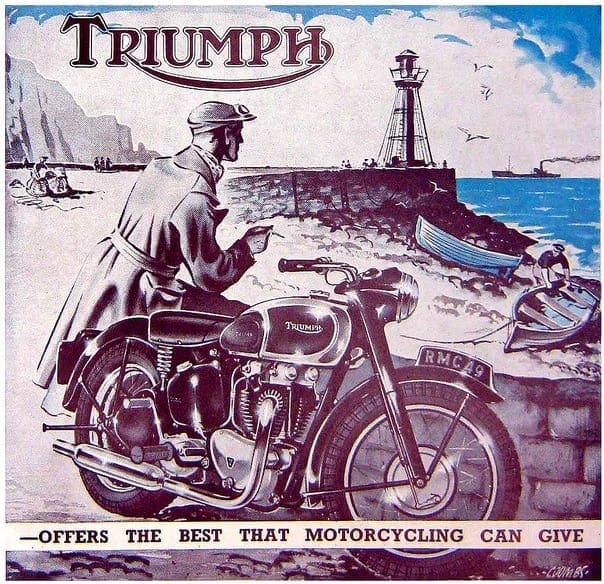
At last year’s Sleaford Classic Car and Motorcycle Show, I spotted the immaculate 1938 Triumph Speed Twin you can see here. It had been rebuilt from a pile of bits. Some photographs showed the state that it was in originally before the restoration started. One photo showed a frame plus the back wheel attached to it… but the front wheel was not connected to the frame.
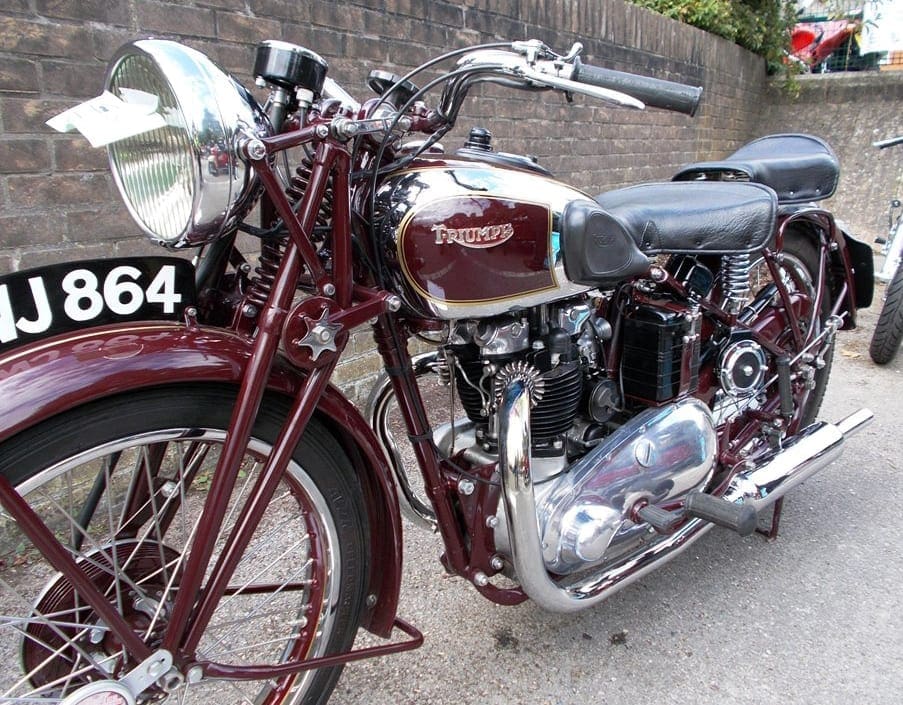
The engine was split into two halves and needed a lot of work to bring it up to its present standard. With the petrol tank, the restorer even refurbished the flexible lead light – a period fitting that would be very useful if you had a problem when it was dark. Twin seats were fitted and there was even a tyre pump as well. Apparently the engine in this bike was only in production for one year, after which the design was changed slightly to improve it. An awful lot of work has gone into this Triumph and it won a well-deserved award at the show. The bike looked like it had just come out of the factory.
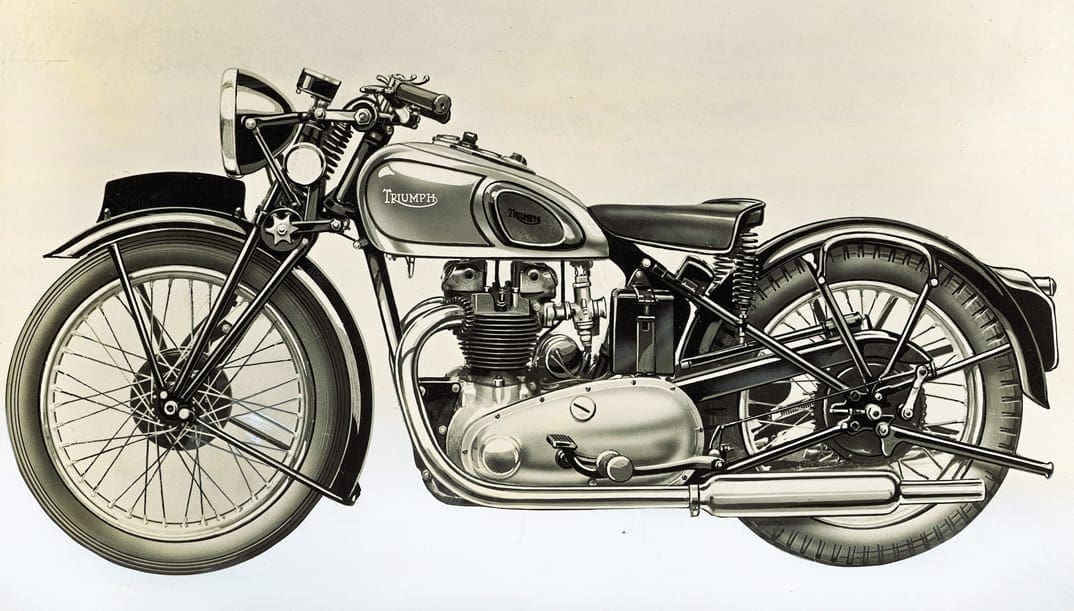
Back in 1937 or so when the prototype was first seen, the Speed Twin was effectively Edward Turner’s first triumph of style over substance. The 5T twin uses the singles’ chassis which was hard-pushed already by the performance of the Tiger 90. Even so, the introduction of a parallel twin set the stage for the next three decades of British motorcycle design.

Turner was jolly pleased with his new ‘extremely compact’ engine with its ‘massive crankcase and monobloc cylinder and headcastings’ that were ‘particularly rigid and free from distortion.’ The compact layout also meant that ‘excellent weight distribution is obtained and… both ground clearance and accessibility are highly satisfactory.’

The cast-aluminium primary chaincase was improved for 1938 by ‘the adoption of a modified streamline contour, and the use of a new alloy which takes an even higher final polish.’ Handling improved somewhat when the Speed Twin adopted the steering geometry introduced on the more sporty Tiger 100.
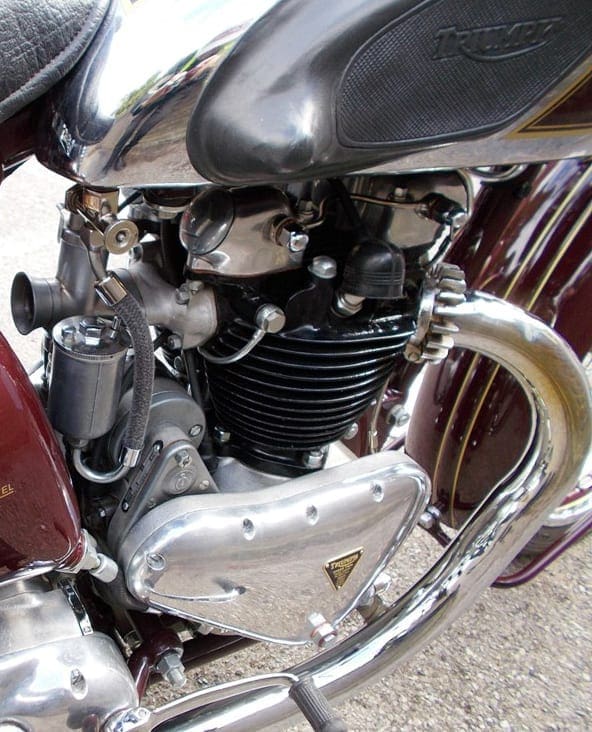
I have an interest in this machine because many years ago I owned a 1939 Tiger 100. Mine was hand-painted, but went very well. I surprised a few of the local lads on their more modern machines. My Tiger was very steady and handled well up to 80mph, when it started to wander a bit.
It was fitted with rubber-mounted handlebars which means the steering isn’t easy to describe. However, they took out some of the shocks when going over bumps. A policeman who stopped me once could not believe it when he could lift the handlebars up and down slightly, but it worked well enough.

I spoke to the owners of the Speed Twin at the end of the show. They were pleased with the bike and were keen to use it to its full potential. It started first kick and sounded nice as they rode away.
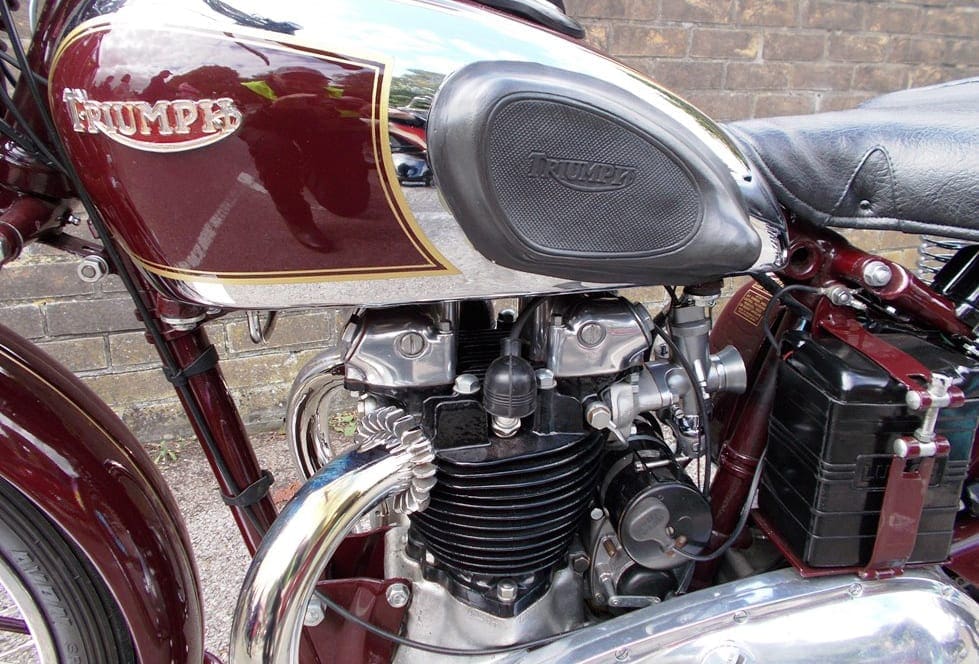
TRIUMPH SPEED TWIN FACT PACK
Manufactured: 1937 to 1958
Engine: Air-cooled ohv parallel twin
Bore / Stroke: 63mm x 80mm
Capacity: 497cc
Compression: 7:1
Output: 28.5bhp @ 6000rpm
Carburettor: Amal Type 276
Lubrication: Dry sump, plunger pump
Electrics: Lucas manual magdyno
Transmission: Four-speed, positive-stop foot change
Front Suspension: Girder forks (check springs from 1940)
Front Tyre: 20 x 3.00
Rear Tyre: 19 x 3.50
Seat Height: 27 inches
Wheelbase: 54 inches
Weight: 365lb
Top Speed: 107mph in 1937
Price New: £75 in 1938
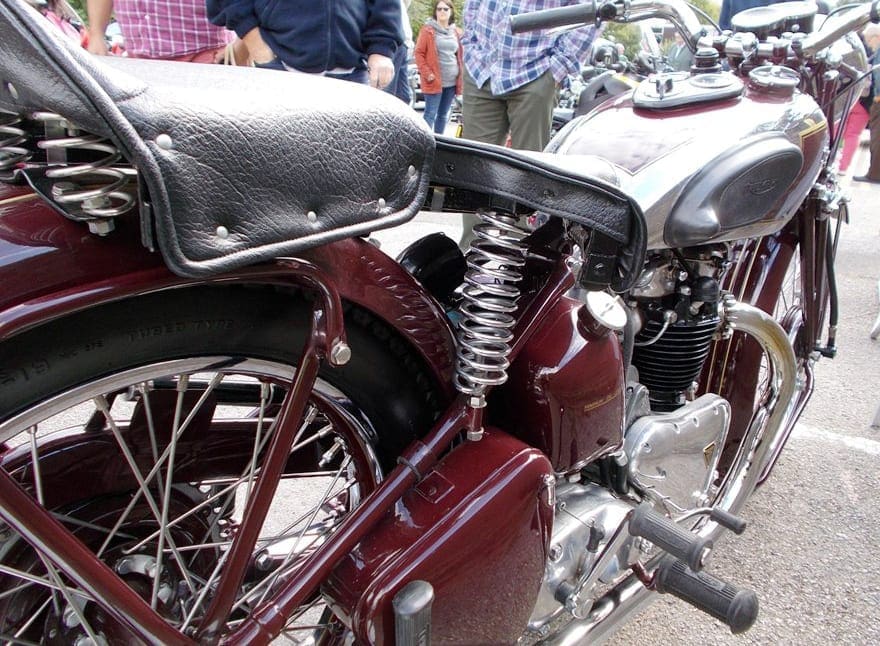
———
Words and photos by Roy Workman
Brochure images: RC RChive / Mortons Archive
For more info about this event, visit the Sleaford Classic Car and Motorcycle Show site




